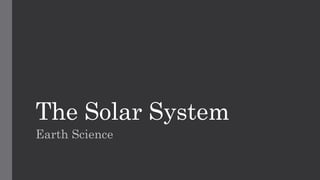Report
Share
Download to read offline

Recommended
More Related Content
Similar to AIKAGAY.pdf
Similar to AIKAGAY.pdf (20)
Compare and Contrast Earth and Mars- 1st Formative Task

Compare and Contrast Earth and Mars- 1st Formative Task
Earth and Space year 5 project Earth, Planets, Space and Sun

Earth and Space year 5 project Earth, Planets, Space and Sun
Recently uploaded
Recently uploaded (20)
Disentangling the origin of chemical differences using GHOST

Disentangling the origin of chemical differences using GHOST
Vip profile Call Girls In Lonavala 9748763073 For Genuine Sex Service At Just...

Vip profile Call Girls In Lonavala 9748763073 For Genuine Sex Service At Just...
Stunning ➥8448380779▻ Call Girls In Panchshil Enclave Delhi NCR

Stunning ➥8448380779▻ Call Girls In Panchshil Enclave Delhi NCR
High Class Escorts in Hyderabad ₹7.5k Pick Up & Drop With Cash Payment 969456...

High Class Escorts in Hyderabad ₹7.5k Pick Up & Drop With Cash Payment 969456...
SAMASTIPUR CALL GIRL 7857803690 LOW PRICE ESCORT SERVICE

SAMASTIPUR CALL GIRL 7857803690 LOW PRICE ESCORT SERVICE
Botany krishna series 2nd semester Only Mcq type questions

Botany krishna series 2nd semester Only Mcq type questions
TEST BANK For Radiologic Science for Technologists, 12th Edition by Stewart C...

TEST BANK For Radiologic Science for Technologists, 12th Edition by Stewart C...
PossibleEoarcheanRecordsoftheGeomagneticFieldPreservedintheIsuaSupracrustalBe...

PossibleEoarcheanRecordsoftheGeomagneticFieldPreservedintheIsuaSupracrustalBe...
Labelling Requirements and Label Claims for Dietary Supplements and Recommend...

Labelling Requirements and Label Claims for Dietary Supplements and Recommend...
Forensic Biology & Its biological significance.pdf

Forensic Biology & Its biological significance.pdf
Pulmonary drug delivery system M.pharm -2nd sem P'ceutics

Pulmonary drug delivery system M.pharm -2nd sem P'ceutics
Nightside clouds and disequilibrium chemistry on the hot Jupiter WASP-43b

Nightside clouds and disequilibrium chemistry on the hot Jupiter WASP-43b
VIRUSES structure and classification ppt by Dr.Prince C P

VIRUSES structure and classification ppt by Dr.Prince C P
AIKAGAY.pdf
- 1. The Solar System Earth Science
- 2. The Solar System -The Planet’s Size -The Planet’s Temperature -The Planet’s Placement In The Solar System
- 3. The Planet Size •The smallest planet in our solar system is Mercury. The planet is about 1/3 of the width of Earth with a radius of 1,516 miles. Earth's moon has a radius of just over 1,000 miles. Home
- 4. The Planet Size •The second smallest planet is Mars, which is about half the size of the Earth with a 2,106-mile radius. •Next is Venus, which is only slightly smaller than Earth. Venus' radius is 3,760 miles. Home
- 5. The Planet Size •The largest planet is Jupiter, according to the National Aeronautics and Space Administration. Jupiter has a radius of 43,441 miles and is 11 times the size of Earth.
- 6. The Planet Size • The planets in order of size, listed from biggest to smallest: • Jupiter: 43,441-mile radius • Saturn: 36,184-mile radius • Uranus: 15,759-mile radius • Neptune: 15,299-mile radius • Earth: 3,959-mile radius • Venus: 3,760-mile radius • Mars: 2,106-mile radius • Mercury: 1,516-mile radius
- 7. The Planet’s Temperature • 1. Venus: •The average temperature of Venus is 464 degree Celsius. It is the hottest planet in the solar system and the second nearest from the Sun. • 2. Mercury: • The average temperature of Mercury is 167 degree Celsius. It is the first nearest planet from the Sun and the second hottest planet in the solar system. The range of temperature of the planet is -93 degree Celsius to 427 degree Celsius.
- 8. The Planet’s Temperature • 3. Earth: • The third planet from the Sun with an average temperature of 15 degree Celsius is our very own planet Earth. • 4. Mars: • Mars is the fourth planet from the Sun with an average temperature of -65 degree Celsius. Mars is made up of rocks which mean it is a terrestrial planet.
- 9. The Planet’s Temperature •5. Jupiter: •Jupiter is the fifth planet from the sun. It is the largest planet in the solar system with an average temperature of -110 degree Celsius. The components of the atmosphere of the planet are ammonia crystals and possible ammonium hydrosulphide. •6. Saturn: •The sixth planet from the Sun with an average temperature of -140 degree Celsius is Saturn. It is the second-largest planet in the solar system after Jupiter.
- 10. The Planet’s Temperature •7. Uranus: •Uranus is the seventh planet from the Sun with an average temperature of -195 degree Celsius. It is the third-largest planet according to the radius and fourth-largest planet according to the mass. The major feature of the planet is it contains ‘ices’ like water, ammonia and methane along with traces of other hydrocarbons.
- 11. The Planet’s Temperature •8. Neptune: •Neptune is the eighth and furthest known planet from the Sun with an average temperature of -200 degree Celsius. The density of the giant planet Neptune is the maximum in the solar system. It is the fourth- largest planet according to the diameter.
- 12. You are correct! Question 2 Question 3 Question 5 Question 4 Question 1 Home
- 13. You are incorrect! • Home Question 2 Question 3 Question 5 Question 4 Question 1
- 14. 1. Which planet is the hottest? A. Mercury B. Earth C. Neptune D. Venus Home
- 15. 2. Which planet is the coldest? A. Uranus B. Neptune C. Mars D. Jupiter Home
- 16. 3. What is the third planet in our solar system? A. Mars B. Venus C. Mercury D. Earth Home
- 17. 4. What is the last planet in our solar system? A. Saturn B. Neptune C. Jupiter D. Uranus Home
- 18. 5. What is the largest planet in our solar system? A. Saturn B. Neptune C. Jupiter D. Uranus Home